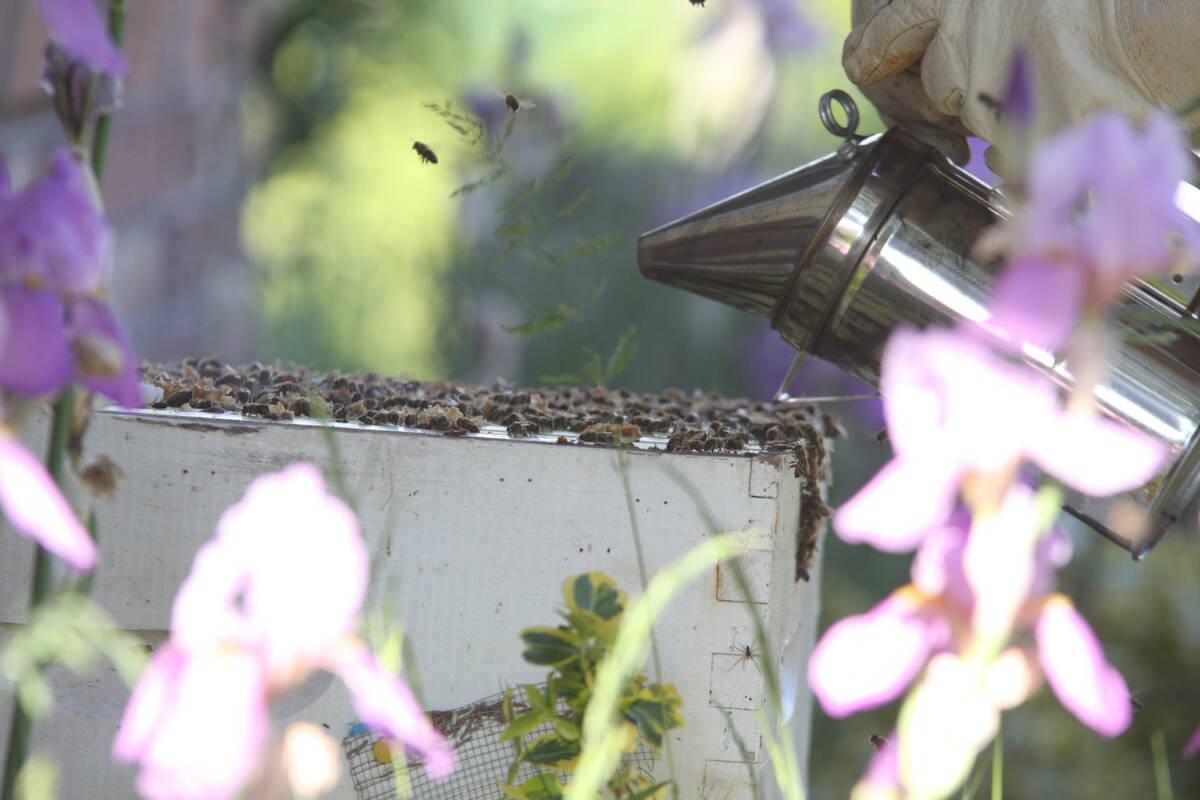MILK RIVER, Alta. – Proposals for water sharing in the Milk River and St. Mary’s river systems await further negotiation by the Montana-Alberta Joint Initiative Team.
Distribution of water from the two river systems has long been contentious, with disputes dating back to the early 1900s.
Both systems begin in the United States, flow into Alberta and then return to the U.S.
The JIT, comprising six people each from Alberta and Montana, was set up to devise potential solutions to water sharing issues.
Read Also

Manitoba beekeepers battle for survival
Honeybee colony losses have hit 43 per cent, making 2025 the latest in a string of poor bee survival years for Manitoba’s honey producers
JIT Alberta member Tom Gilchrist told members of the Milk River Watershed Council April 6 that “principles of a solution have been formulated.”
He declined to provide details, noting his Montana counterparts had yet to discuss the proposals with stakeholders in that state.
Robert Harrison, director of Alberta Environment’s transboundary water policy branch, said in a later interview that the JIT has spent 21 months exploring infrastructure and administrative options.
Infrastructure ideas include a reservoir on the Milk River, which has been contemplated for years and would allow Alberta to store more of the flow for later use.
“It’s been on the books as a potential project for a long time,” said Harrison.
“Right now we get a very, very, very small portion of our share because it just flows by Alberta in the springtime.”
Joint infrastructure has also been discussed, in which Alberta and Montana would share costs to build the reservoir and then share its water storage capacity.
Administrative options involve a credit system, which would require changes to the calculation formula for water allocation.
“Is there a way that we could allow Montana to claim a little bit of a credit on the St. Mary’s River and allow Canada, Alberta, to claim a little bit of a credit on the Milk River early in the year, and then trade those credits later in the year when you need the water during those drier periods,” said Harrison.
As it stands, surplus water flows into Canada if Montana isn’t able to capture all the water to which it is entitled.
“There’s no credit given to the upstream jurisdiction. That water, if they don’t catch it, it’s just forfeit and it becomes the right of the down-stream province.”
The credit system has been discussed with irrigation districts on the Alberta side and with the provincial ministers of agriculture and environment.
All have agreed to continue discussion, said Harrison.
“We’re very fortunate that our water users in southern Alberta, they really understand the system. We count ourselves very lucky that the people who are involved in water management, the end users, they really know what’s going on and all the pieces of it.”
However, Montana hasn’t met with all its stakeholders, among them those who administer the approximately 160,000 acres irrigated from the St. Mary’s and Milk rivers.
Harrison expects talks will reconvene after the current sitting of the Montana legislature, possibly as early as May.
Among Montana’s challenges is outdated infrastructure that includes a siphon system near Babb that diverts some of the St. Mary’s River flow into the Milk River, where Montana irrigators can use it.
The structure dates back to 1916 and needs upgrades.
“They are in a very difficult situation,” said Harrison.
“That’s a key piece of infrastructure. Without that water coming across from the St. Mary’s, they don’t have irrigation in the east. But they are finding it very difficult to get federal funding. The United States is very challenged right now (as it tries to control its deficit).”
For a map of the area at issue visit www.milkriverwatershedcouncil.ca/maps.html
WHAT IS COVERED IN A TRANSBOUNDARY WATER AGREEMENT?
•Water quantity: the amount to which each party is entitled
•Water quality: the minimum requirements for the quality of water that is shared
•Entitlements and obligations: these outline the amount to which the upstream user is entitled and its obligation to downstream users
•Monitoring: method of ensuring parties adhere to quantity, quality and other obligations
•Emergency notification: the process of informing other users of unusual situations
•Knowledge sharing: making research available to other parties to avoid duplication and expense
•Dispute resolution: the mechanism that will be used to resolve problems
Source: Alberta Environment















